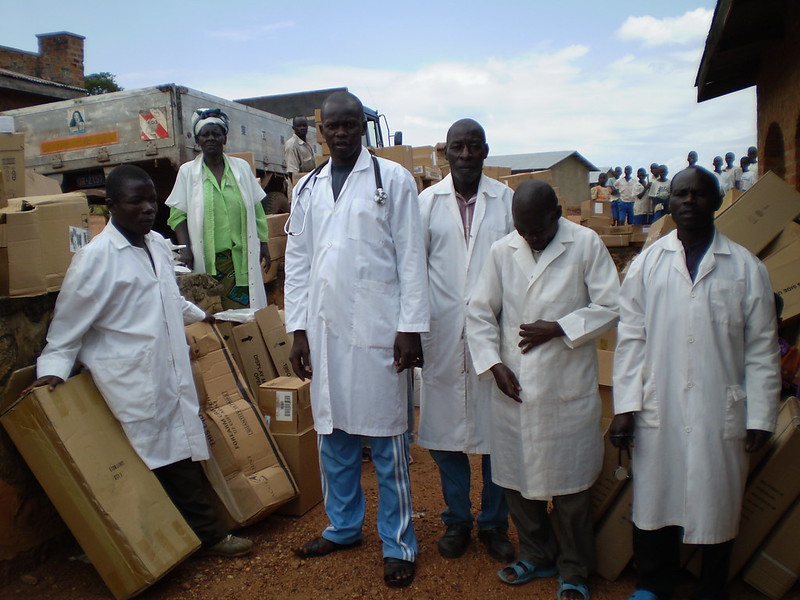Healthcare in the Democratic Republic of the Congo
 One of the biggest challenges facing the Democratic Republic of the Congo is its healthcare system. The country faces many barriers to adequate healthcare, such as low funding, systematic and structural difficulties, poverty, proper treatment and testing, education and more. However, many organizations worldwide are working to improve healthcare in the country through direct aid and legislation.
One of the biggest challenges facing the Democratic Republic of the Congo is its healthcare system. The country faces many barriers to adequate healthcare, such as low funding, systematic and structural difficulties, poverty, proper treatment and testing, education and more. However, many organizations worldwide are working to improve healthcare in the country through direct aid and legislation.
The Problems with the Healthcare System in the Democratic Republic of the Congo
The healthcare system lacks investment and funding. As a result, it is difficult for the country to combat prevalent healthcare issues, such as infectious diseases. It also provides obstacles to combatting more pervasive issues such as infant and mother mortality rates. According to the CDC, the top causes of death in the Democratic Republic of the Congo are “malaria, lower respiratory infections, neonatal disorders and tuberculosis.”
Many of these issues are preventable. However, as of 2017, the Democratic Republic of the Congo only dedicated 3.98% of GDP to healthcare. In comparison, the U.S. dedicated 17.06% to healthcare. Healthcare in the Democratic Republic of the Congo requires consistent funding and resources to ameliorate and reduce these problems; without increased investment, these healthcare problems will only continue to persist.
Furthermore, the WHO states that another complication facing the healthcare system is a lack of resources. The healthcare facilities that are up and running are “often poorly maintained” and difficult to access. Moreover, many communities throughout the country are isolated and spread out. For example, the WHO states that 80% of cholera patients are displaced throughout the country. With these patients vastly spread out, it becomes harder and harder to treat and reduce the impact of cholera. Additionally, traveling from one area to the next present difficulties because of damaged and underdeveloped roads, which introduces another barrier to proper treatment.
Therefore, it becomes increasingly difficult for citizens to even obtain access to healthcare clinics and/or hospitals. Factoring in violence and displacement, lack of food and healthy drinking water and extreme poverty conditions, healthcare in the Democratic Republic of the Congo’s is in dire need of support and aid.
What Organizations are Doing to Help
With that said, what are other countries and organizations doing to help the Democratic Republic of the Congo? There are many organizations around the world working to reduce global poverty and improve healthcare in the Democratic Republic of the Congo and other struggling countries. The focus herein are direct, firsthand efforts from organizations such as USAID, the CDC and WHO.
- The WHO is actively trying to obtain accurate information about population and health in order to properly provide solutions for certain problems. For example, the WHO seeks to obtain information about issues, such as infant mortality rate and the necessary vaccines. Then, they modernize this information by implementing new technology and software to ensure that the data is upkept, accurate and transformative.
- USAID is training local citizens and communities on proper healthcare treatment and issues. USAID helps these citizens utilize “locally available resources” to treat the pervasive health issues specific to the country. Additionally, USAID also seeks to increase education by providing scholarships to people to pursue comprehensive medical education. USAID also strives to increase funding and investment for healthcare in the Democratic Republic of the Congo.
- The CDC has sent more than two million testing kits and thousands of vaccines/treatments to combat a multitude of issues such as malaria, HIV/AIDS, influenza and infections. Additionally, they have also increased the number of healthcare clinics and other testing and treatment sites across the country. These sites now include five new “sentinel sites for influenza and other infections”.
Moving Forward
Furthermore, advocacy organizations push federal legislation focused on reducing poverty and improving healthcare systems across the world. Equally important, these continual and consistent efforts prioritize allocation of U.S. foreign aid towards these economically struggling countries.
Overall, healthcare in the Democratic Republic of the Congo, underfunded for many years, still requires intense rebuilding and change. However, many organizations across the world are understanding these healthcare issues and taking action to help. While much more progress must occur in order to ensure a stable, successful healthcare system, the progress that is currently underway should not be overlooked.
– Sophia McWilliams
Photo: Flickr
